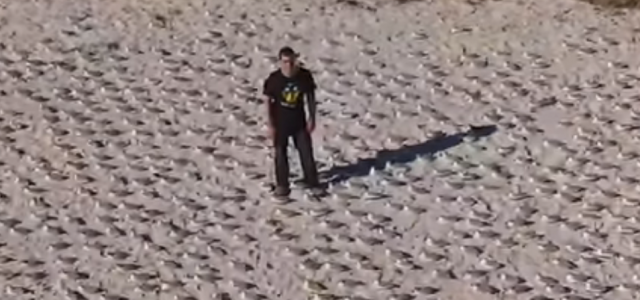A new study has confirmed the accuracy and reliability of drones for wildlife monitoring. The use of drones has become an important component of spotting, tracking and counting wildlife. The technology has been used to track elephants, seals and other mammals. Ecologists with the Fish and Wildlife Service have even used drones to deliver vaccine-laced candy to threatened prairie dogs. Previous studies have shown drone-based efforts produce more consistent tallies of nesting birds, including frigate birds, terns and penguins. But because scientists can never know the exact number of animals, determining the accuracy of drones during wildlife mentoring efforts has proven difficult.
In the latest effort, dubbed the #EpicDuckChallenge, scientists used duck decoys to control the exact number of targets. “We needed to test the technology where we knew the correct answer,” Jarrod Hodgson, an environmental scientist at the University of Adelaide, said in a news release. “We couldn’t use wild animals because we could never be sure of the real number of individuals present.” Researchers spread 1,000 ducks on the beach, organized in colonies. They had one group of practiced wildlife-spotters count birds using binoculars and another group count birds in aerial photographs captured by drones.
The drone-human approach yielded the most accurate counts. “We found it is more accurate and more precise to have people count birds from the drone imagery than to do it on location,” Hodgson said. Scientists also had drones count the birds themselves using a special algorithm. Their efforts were just as precise and consistent as the drone-human approach.
“With so many animals across the world facing extinction, our need for accurate wildlife data has never been greater,” Hodgson said. “Accurate monitoring can detect small changes in animal numbers. That is important because if we had to wait for a big shift in those numbers to notice the decline, it might be too late to conserve a threatened species.” Scientists published their work in the journal Methods in Ecology and Evolution. “Our results show that monitoring animals with drones produces better data that we can use to proactively manage wildlife,” said Hodgson.
Feb. 13 (UPI)–




















Did anyone think about using curved drone flight lines (non-linear/non-parallel) to provide a much more diversity of views when counting the wildlife?
Visit http://www.immersivegeomaticssolutions.com
to learn more about using curved flight lines for drones and piloted aircraft.